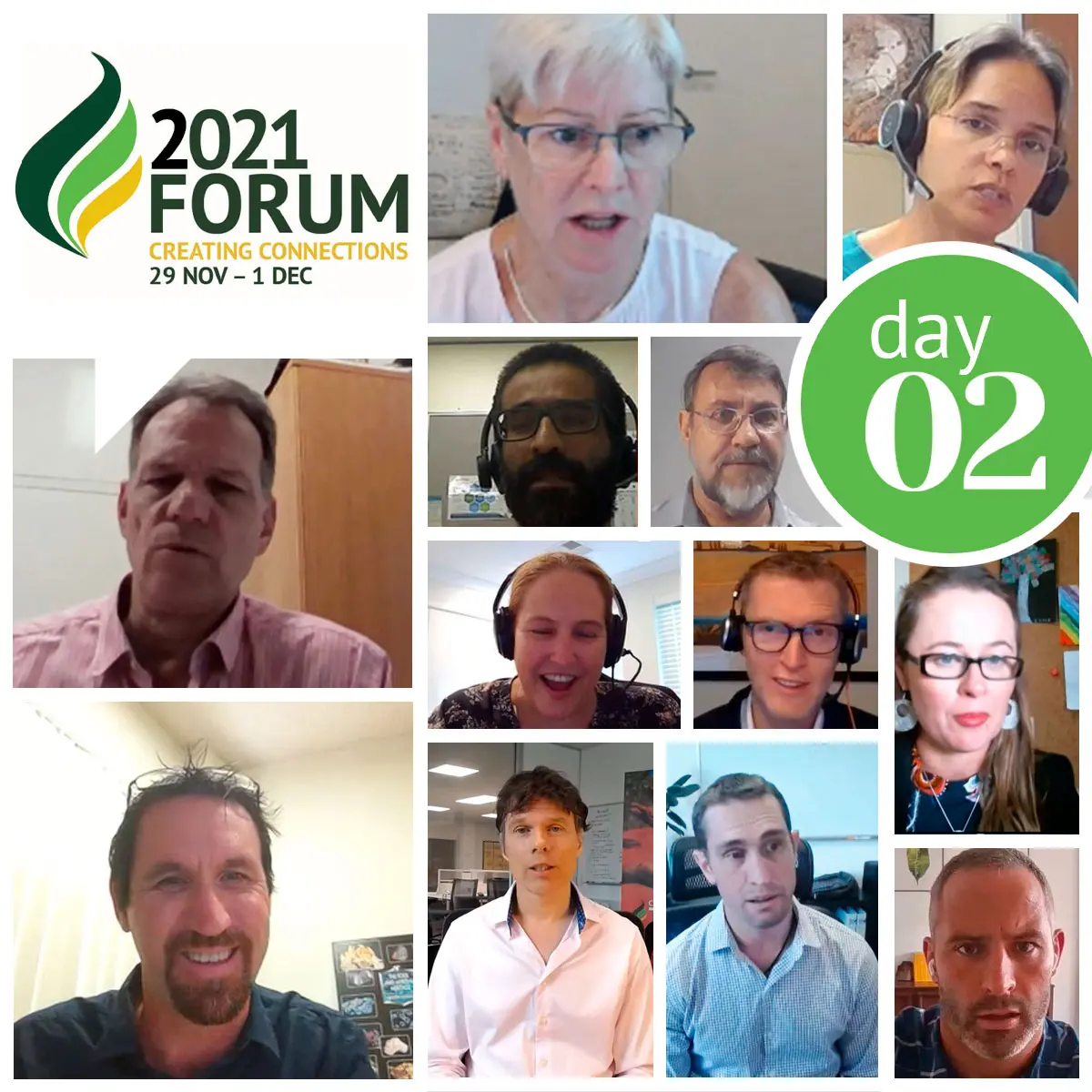Aidan Davy, COO, International Council on Mining & Metals (ICMM) reminded us that closure has been a constant in the thinking of ICMM since the mid to late 2000s. If people are going to support mines coming online, they need to be confident that those mines will be responsibly closed. This includes if there are changes in financial or environmental circumstances and mines need to close early. By thinking about closure earlier, it allows for planning to enable better outcomes for communities. There is a key insight here: not planning for closure leads to missing out on the benefits of effective closure. There is an opportunity cost.
Kaylene Gulich, CEO, Western Australian Treasury Corporation showed that the investment environment is continuously evolving, including the growth in ‘use of proceeds bonds.’ Investors are no longer just looking for returns, but also outcomes. This trend is impacting traditional investment: these trends are being felt in Boardrooms. Financial regulators and ratings agencies are becoming more active and scrutinising what is meant by ‘ESG outcomes’.
Four workshops were held on the topics of:
- The role of mine closure intangibles in ESG implementation and achieving net benefits
- Understanding values in post-mining economies
- Cumulative regional impact assessment
- Innovation through demonstration and trial sites
In terms of workshop findings, a key question was whether financial derivative products provide tradeable post closure solutions? Another is whether NPV is appropriate and if so, how do we address discounting factors for Intangible Uncertainties? We need better ways to quantify tangible factors, intangible values, risks and uncertainties, where they are inadequately addressed in cash flows.
Another workshop investigated people’s critical values with regards to transition to post mining economies – and considerations in realising them. It raised the question of whether there is a trade-off between jobs and broader well-being? And does there need to be? For companies, what matters for industry is what matters for communities. Dialogue and early engagement came up as a crucial factor however, as Fran Ackerman expressed: “time changes the goal posts”. For example, the Rocket Launch facility in Northern Territory is now in discussion but may not have been on everyone’s radar at the beginning of the mine-life cycle. Transition needs sufficient certainty to plan and sufficient flexibility to adapt.
Carina Kemp, Data and Digital Advisers, highlighted the link between ‘trust’ and ‘data’ which is continuously changing. New methods are getting more dynamic, more interactive and more accessible. Renae Desai, CRC TiME Project Leader, Murdoch University, reminded us that translation is a key component of achieving the goals of the CRC. Sometimes the great ideas of designers need adjusting to align with ‘user experience’ data.
Tom Hatton mentioned that “Our reach exceeds our grasp”. We have a supply chain issue for data to contextualise individual projects: Cumulative Environmental Impact Assessment needs to be legitimate, credible and salient, addressing what matters to regions and be relevant over time.
When host organisations provide demonstration sites and commit to research partnerships, they must resource projects appropriately and publish outcomes whether or not they went according to expectations.
A quick note for partners, here are the details of an information session for a German-Australian Chamber of Commerce organised mining delegation to Germany in May 2022. Webinar : “Sustainable Mining” Delegation Trip Australia 2022 | Event | Structural Change (gtai.de)

